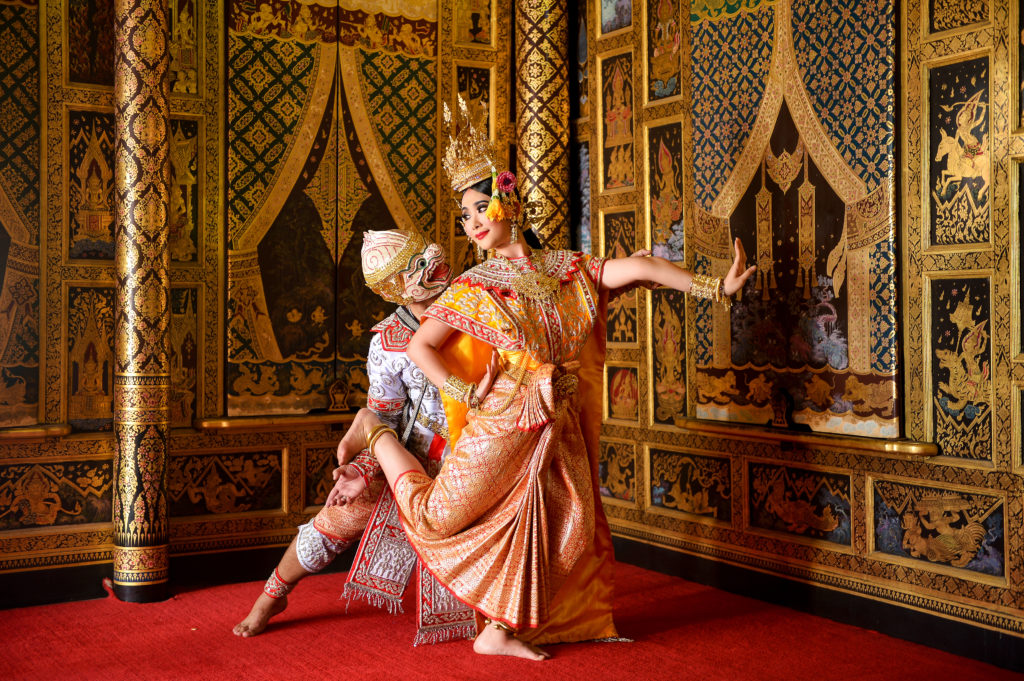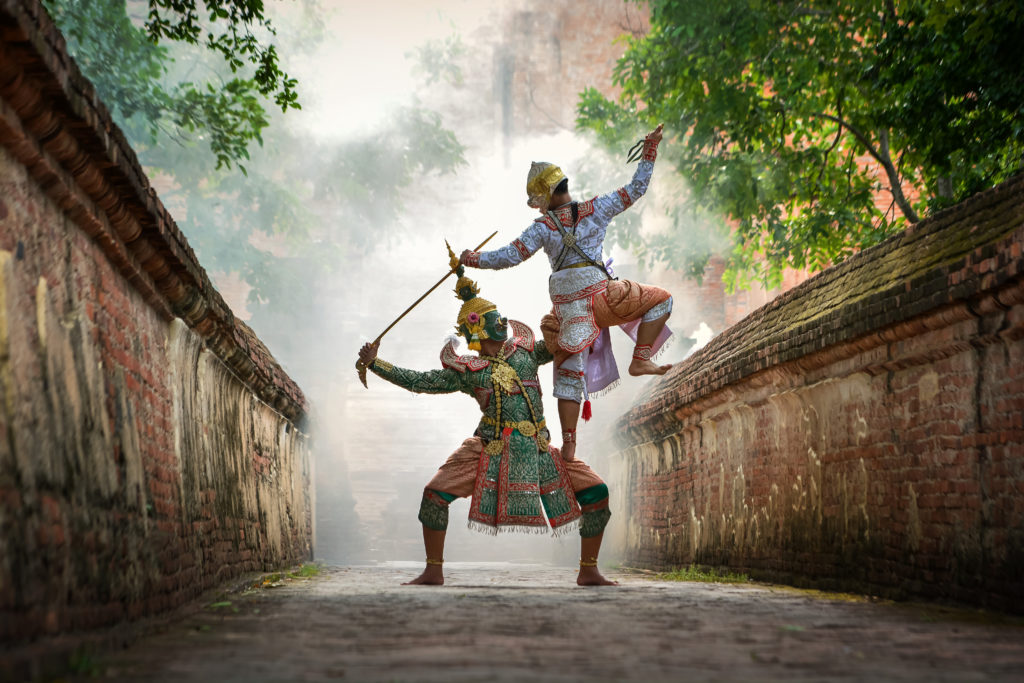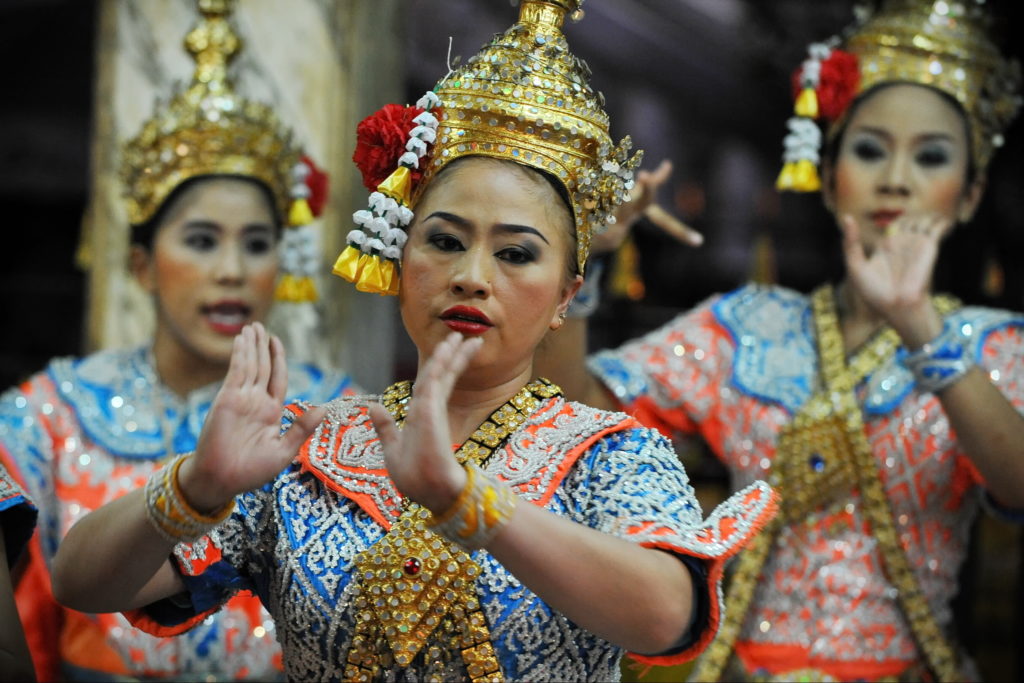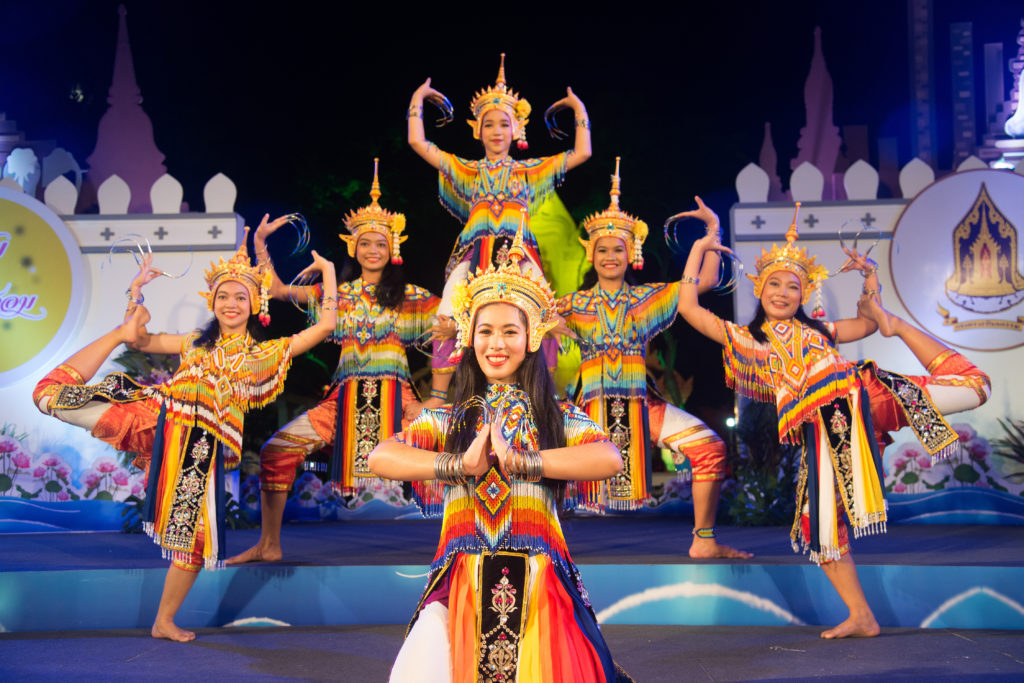Thai traditional dance forms
Through graceful and elegant movements with elaborately decorated costumes combined with storytelling music, Thai traditional dance has a wonderful history that is still seen today through different types of Thai dance. On International Dance Day, we celebrate the participation and education in dance with a brief introduction to the history of the beautiful dance in Thailand and the different forms it comes in.
History of Thai Traditional Dance

As the first theatrical art form of Thailand, Thai dance includes many forms, including Khon, Lakhon Nai, and Li-khe, to name a few. Thai traditional dance is a mixture of graceful and elaborate body movements with lavish costumes and music.
Initially influenced by Indian culture, Thai dance fully evolved during Rama II when strong national characteristics were incorporated. Before Thai dance was open to the public in the 20th century, it was originally only permitted in the Royal Court. The lives of the Thai people largely influence Thai folk dances by the stories of their daily lives with stories relating to religious rituals, rice planting, and harvesting.
Khon

One of the best-known classical dances is the UNESCO Heritage Khon Dance, often performed in the royal court with masked dancers and a narrator. With a history of 400 years, the dance evolved from the ritual and dance of the Hindu temple. Khon is often performed by male dancers dressed as characters, including men, women, demons, and monkeys.
Lakhon Nai

Initially performed by royal maidens, Lakhon Nai is danced mainly by women who work together and perform in groups. It’s the most classical form of Lakhon dance developed within the courts of Ayutthaya and Bangkok. Although women often perform Lakhon Nai, both men and women partake in this classical dance with no difference in style. Graceful acts are used with lively hand movements without much use of the lower half of the body.
Li-khe

Throughout Thailand, Li-khe is a very popular folk dance performed with elaborate costumes and amusing humor. The scripts tell the story of love with the performers, often using improvisation for a funny and engaging act.
Thai Traditional Dance Today
Throughout Thailand, this art form is kept alive through performance troops stemming from small village troops to those at the national level. Most Thai universities offer degrees in Thai performing arts and teaching degrees in Thai fine arts, which are inclusive of dance and Thai classical music. Some performances have introduced more contemporary elements to keep the pieces relatable to Thailand visitors and the younger Thai generations. From Thailand to the United States, Thai dance has been preserved for future generations to appreciate the culture and beauty of this dance form!
To experience the wonderful history of Thai traditional dance in Thailand yourself, there are many places around Bangkok to witness the art form. Two theaters, in particular, are Siam Niramit and The National Theatre in Bangkok. Siam Niramit boasts hundreds of performers dancing in various styles in elegant costumes. The National Theatre performs two types of classical dance including Khon and Lakhon!
Comments
Post a Comment